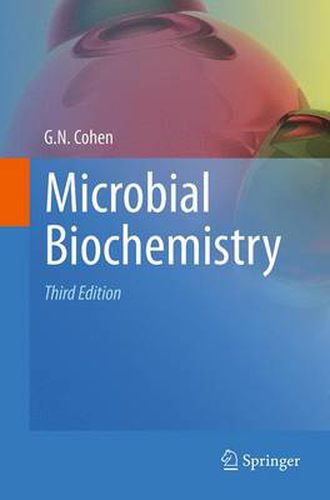Readings Newsletter
Become a Readings Member to make your shopping experience even easier.
Sign in or sign up for free!
You’re not far away from qualifying for FREE standard shipping within Australia
You’ve qualified for FREE standard shipping within Australia
The cart is loading…






This title is printed to order. This book may have been self-published. If so, we cannot guarantee the quality of the content. In the main most books will have gone through the editing process however some may not. We therefore suggest that you be aware of this before ordering this book. If in doubt check either the author or publisher’s details as we are unable to accept any returns unless they are faulty. Please contact us if you have any questions.
Microbial physiology, biochemistry and genetics allowed the formulation of concepts that turned out to be important in the study of higher organisms. In the first section, the principles of bacterial growth are given, as well as the description of the different layers that enclose the bacterial cytoplasm, and their role in obtaining nutrients from the outside media through different permeability mechanism described in detail. A chapter is devoted to allostery and is indispensable for the comprehension of many regulatory mechanisms described throughout the book. Another section analyses the mechanisms by which cells obtain the energy necessary for their growth, glycolysis, the pentose phosphate pathway, the tricarboxylic and the anaplerotic cycles. Two chapters are devoted to classes of microorganisms rarely dealt with in textbooks, namely the Archaea, mainly the methanogenic bacteria, and the methylotrophs. Eight chapters describe the principles of the regulations at the transcriptional level, with the necessary knowledge of the machineries of transcription and translation. The next fifteen chapters deal with the biosynthesis of the cell building blocks, amino acids, purine and pyrimidine nucleotides and deoxynucleotides, water-soluble vitamins and coenzymes, isoprene and tetrapyrrole derivatives and vitamin B12. The two last chapters are devoted to the study of protein-DNA interactions and to the evolution of biosynthetic pathways. The considerable advances made in the last thirty years in the field by the introduction of gene cloning and sequencing and by the exponential development of physical methods such as X-ray crystallography or nuclear magnetic resonance have helped presenting metabolism under a multidisciplinary attractive angle.
$9.00 standard shipping within Australia
FREE standard shipping within Australia for orders over $100.00
Express & International shipping calculated at checkout
This title is printed to order. This book may have been self-published. If so, we cannot guarantee the quality of the content. In the main most books will have gone through the editing process however some may not. We therefore suggest that you be aware of this before ordering this book. If in doubt check either the author or publisher’s details as we are unable to accept any returns unless they are faulty. Please contact us if you have any questions.
Microbial physiology, biochemistry and genetics allowed the formulation of concepts that turned out to be important in the study of higher organisms. In the first section, the principles of bacterial growth are given, as well as the description of the different layers that enclose the bacterial cytoplasm, and their role in obtaining nutrients from the outside media through different permeability mechanism described in detail. A chapter is devoted to allostery and is indispensable for the comprehension of many regulatory mechanisms described throughout the book. Another section analyses the mechanisms by which cells obtain the energy necessary for their growth, glycolysis, the pentose phosphate pathway, the tricarboxylic and the anaplerotic cycles. Two chapters are devoted to classes of microorganisms rarely dealt with in textbooks, namely the Archaea, mainly the methanogenic bacteria, and the methylotrophs. Eight chapters describe the principles of the regulations at the transcriptional level, with the necessary knowledge of the machineries of transcription and translation. The next fifteen chapters deal with the biosynthesis of the cell building blocks, amino acids, purine and pyrimidine nucleotides and deoxynucleotides, water-soluble vitamins and coenzymes, isoprene and tetrapyrrole derivatives and vitamin B12. The two last chapters are devoted to the study of protein-DNA interactions and to the evolution of biosynthetic pathways. The considerable advances made in the last thirty years in the field by the introduction of gene cloning and sequencing and by the exponential development of physical methods such as X-ray crystallography or nuclear magnetic resonance have helped presenting metabolism under a multidisciplinary attractive angle.